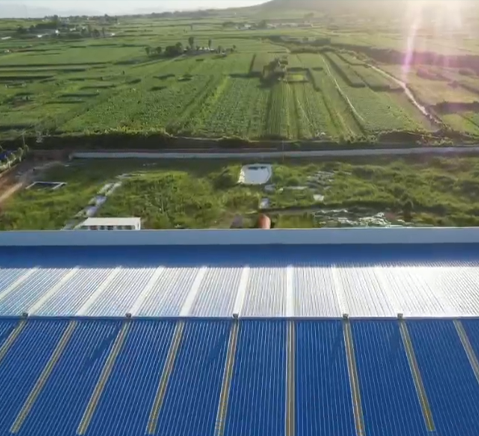Oct . 18, 2024 12:14 Back to list
Types and Benefits of Submersible Irrigation Pumps for Efficient Water Management
Submersible Irrigation Pumps An In-Depth Overview
In the realm of agriculture and irrigation, the efficient management of water resources is paramount. One of the most effective tools for this purpose is the submersible irrigation pump. These pumps are designed to be placed underwater, making them ideal for various irrigation applications. Their unique design, operational efficiency, and adaptability to different environments play a significant role in modern farming practices.
What Are Submersible Irrigation Pumps?
Submersible irrigation pumps are devices that function below the water surface. They consist of a sealed motor and a pump body, which work together to move water to the surface. The primary advantage of these pumps is that they can push water to the surface rather than pulling it from above, making them particularly effective in deep well applications. This characteristic allows for greater efficiency, as they do not suffer from the air-lock issues that can affect surface pumps.
How Do They Work?
These pumps operate by converting electrical energy into mechanical energy, which is used to move water. The submersible pump is situated in a well or a body of water, and as it operates, the motor spins an impeller. This spinning action creates a centrifugal force that moves water through the pump and up into the irrigation system. The water can then be distributed as needed across agricultural fields or gardens.
Advantages of Submersible Pumps
1. Efficiency Submersible pumps are generally more efficient than their surface counterparts. Because they are immersed in water, they do not have to work as hard to lift the water, resulting in lower energy consumption.
2. Space-Saving Design Their compact design allows for installation in tight spaces and makes them ideal for areas where surface pumps would be impractical.
3. Durability and Longevity Submersible pumps are typically built to withstand harsh conditions, including corrosion and sediment. This results in a longer operational life, making them a cost-effective choice for farmers.
submersible irrigation pumps

Applications in Agriculture
Submersible irrigation pumps are widely used in various agricultural settings, including
- Irrigation of Crop Fields Farmers use these pumps to draw water from wells, rivers, or reservoirs for irrigating crops. This ensures that crops receive the necessary moisture, which is crucial for healthy growth and yield.
- Water Supply for Livestock Submersible pumps can also supply water to livestock, facilitating their needs efficiently and effectively.
- Irrigation of Gardens and Lawns Homeowners and commercial landscapers often utilize submersible pumps for irrigation systems, particularly in large gardens and parks where consistent watering is essential.
- Hydroponics and Aquaponics These pumps can play a critical role in systems where plants are grown in water-based environments, ensuring that nutrient-rich water is circulated throughout the structure.
Conclusion
Submersible irrigation pumps represent a significant advancement in the way water is managed in agriculture and landscaping. Their efficiency, durability, and versatility make them an indispensable tool for farmers and gardeners alike. As water scarcity becomes an increasingly pressing issue, the importance of effective irrigation methods will only grow, solidifying the role of submersible pumps in sustainable agricultural practices. With advancements in technology, these pumps are likely to become even more efficient, offering innovative solutions for future irrigation needs. By embracing such advancements, we can ensure a more secure and productive agricultural future.
-
Submersible Water Pump: The Efficient 'Power Pioneer' of the Underwater World
NewsJul.01,2025
-
Submersible Pond Pump: The Hidden Guardian of Water Landscape Ecology
NewsJul.01,2025
-
Stainless Well Pump: A Reliable and Durable Pumping Main Force
NewsJul.01,2025
-
Stainless Steel Submersible Pump: An Efficient and Versatile Tool for Underwater Operations
NewsJul.01,2025
-
Deep Well Submersible Pump: An Efficient 'Sucker' of Groundwater Sources
NewsJul.01,2025
-
Deep Water Well Pump: An Efficient 'Sucker' of Groundwater Sources
NewsJul.01,2025
-
 Submersible Water Pump: The Efficient 'Power Pioneer' of the Underwater WorldIn the field of hydraulic equipment, the Submersible Water Pump has become the core equipment for underwater operations and water resource transportation due to its unique design and excellent performance.Detail
Submersible Water Pump: The Efficient 'Power Pioneer' of the Underwater WorldIn the field of hydraulic equipment, the Submersible Water Pump has become the core equipment for underwater operations and water resource transportation due to its unique design and excellent performance.Detail -
 Submersible Pond Pump: The Hidden Guardian of Water Landscape EcologyIn courtyard landscapes, ecological ponds, and even small-scale water conservancy projects, there is a silent yet indispensable equipment - the Submersible Pond Pump.Detail
Submersible Pond Pump: The Hidden Guardian of Water Landscape EcologyIn courtyard landscapes, ecological ponds, and even small-scale water conservancy projects, there is a silent yet indispensable equipment - the Submersible Pond Pump.Detail -
 Stainless Well Pump: A Reliable and Durable Pumping Main ForceIn the field of water resource transportation, Stainless Well Pump has become the core equipment for various pumping scenarios with its excellent performance and reliable quality.Detail
Stainless Well Pump: A Reliable and Durable Pumping Main ForceIn the field of water resource transportation, Stainless Well Pump has become the core equipment for various pumping scenarios with its excellent performance and reliable quality.Detail
